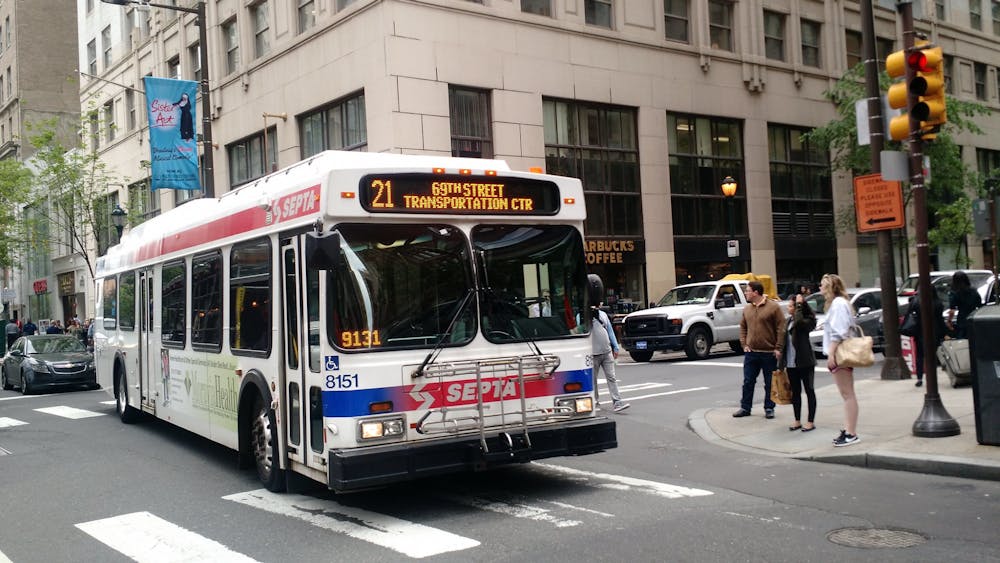I began asking myself questions about the reliability of the systems of public transportation when I was thinking of ways to spend a weekend in the city. After a quick evaluation of local foodie accounts on Instagram and the advice of friends, I ultimately fell in love with a restaurant in West Philadelphia. Looking through the videos and posts of the former patrons, I knew that it was the perfect way to spend an early Saturday afternoon.
What I wasn’t aware of was that going to this restaurant would've taken me over an hour, having to take a bus and two trains. Curiously, I looked at how long it would take to get there by taking an Uber, and it would've been twenty minutes. That prompted me to start thinking of public transportation in a broader sense, asking myself why it takes an arm and a leg to head to the opposite side of the city via public transportation.
Public transportation is an essential, vital aspect of living in an urban environment, providing millions of people with accessible means of transportation every day. However, the reliability of public transportation comes into play when we think of larger systemic issues that can affect the efficiency of public transportation, particularly for students in cities like Philadelphia.
To understand the problem of unreliable public transportation better and explore potential solutions, I spoke with Megan Ryerson, a researcher at the University of Pennsylvania, who specializes in city and regional planning. Speaking with Megan was insightful as we discussed and dissected the main issues of unreliable public transportation.
We spoke together about the role funding plays in public transportation reliability, the steps that can be taken to ensure it, how public transportation providers and governments can work together to improve reliability, and what specific measures can they take, and ethical considerations involved in efforts to improve public transportation reliability, particularly in terms of equity and access.
After discussing my frustrations with having to go to all the way downtown just to do a wrap around to West Philly, Megan informed me the history of transit is centered around the mobility of mostly rich, white, male suburban commuter coming in and out of the city for work and we’ve made very little efforts to shift the infrastructural approach to public transportation in that aspect, “discounting neighborhood distribution.”
“We’ve really discounted neighborhoods in Philadelphia to circulate in favor of more long haul commutes and a lot of cities in the United States have this legacy.” Megan recounted.
So after talking with professionals and thinking about potential solutions to the problem of unreliable public transportation, my mind immediately connected with one point mentioned in my conversation with Megan, which is to modernize and upgrade existing infrastructure. This could include investments in new vehicles, signaling systems, and other technologies that can improve reliability and reduce downtime. Increasing funding and investment in public transportation could also help to address funding shortages and provide resources for essential maintenance and upgrades.
Another important approach is to utilize data and technology to improve scheduling and communication with riders. By using real-time data and predictive analytics, transportation systems can better anticipate and respond to service disruptions, reducing the impact on riders. Additionally, better communication with riders, through tools like mobile apps and social media, can help to keep riders informed about service changes and disruptions.
Looking at successful public transportation systems in other cities, such as providing valuable lessons for improving reliability. Cities like London, mentioned by Megan, have invested in modernizing and upgrading infrastructure, implementing preventative maintenance programs, and utilizing data and technology to improve service. By studying their successes, we can identify best practices and strategies that could be applied to the case of SEPTA.
Furthermore, addressing issues of equity and accessibility is also crucial in improving the reliability of public transportation. Many low-income communities and communities of color rely heavily on public transportation, and thus are disproportionately affected by unreliable service. Therefore, it is essential to ensure that these communities have equal access to reliable transportation options, which can be achieved through targeted investments and policy initiatives.
The reliability of public transportation is a multifaceted issue that requires a comprehensive approach to address. With the right people in government investing in modernizing infrastructure, utilizing data and technology, and addressing issues of equity and accessibility, we can improve the reliability of public transportation and ensure that it remains a vital and accessible aspect of urban living.




